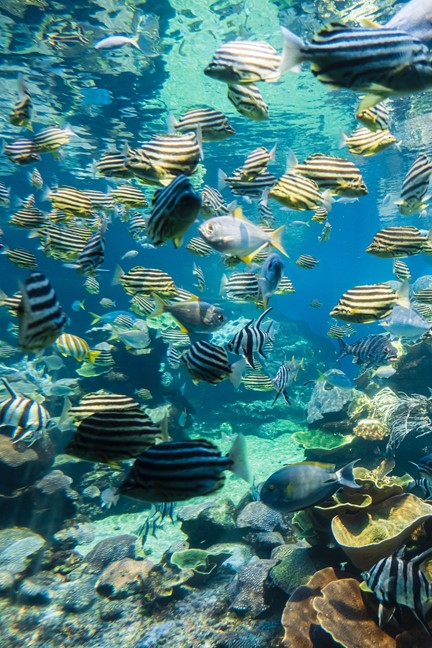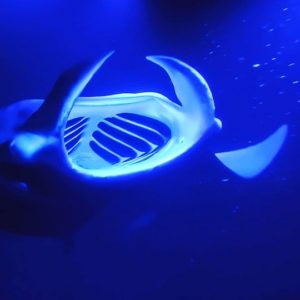University of Colorado at Boulder did a study on what makes fish fins so strong yet flexible.
The research could one day lead to new designs for robotic surgical tools or even airplane wings that change their shape with the push of a button. Daniel Strain for Science Daily writes on the results of the study.
Peer into any fishbowl, and you’ll see that pet goldfish and guppies have nimble fins. With a few flicks of these appendages, aquarium swimmers can turn in circles, dive deep down or even bob to the surface.
New research led by the University of Colorado Boulder has uncovered the engineering secrets behind what makes fish fins so strong yet flexible. The team’s insights could one day lead to new designs for robotic surgical tools or even airplane wings that change their shape with the push of a button.
The researchers published their results Aug. 11 in the journal Science Robotics.
Francois Barthelat, senior author of the study, noted that fins are remarkable because they can achieve feats of dexterity even though they don’t contain a single muscle. (Fish move these structures by twitching sets of muscles located at the base of the fins).
“If you look at a fin, you’ll see that it’s made of many stiff ‘rays,'” said Barthelat, professor in the Paul M. Rady Department of Mechanical Engineering. “Each of those rays can be manipulated individually just like your fingers, but there are 20 or 30 of them in each fin.”
In their latest research, Barthelat and his colleagues drew on a range of approaches, including computer simulations and 3D-printed materials, to dive deep into the biomechanics of these agile structures. They report that the key to fish fins may lie in their unique design. Each ray in a fin is made up of multiple segments of a hard material that stack on top of much softer collagen, making them the perfect balance between bouncy and stiff.
“You get this dual capability where fins can morph, and yet they’re still quite stiff when they push water,” he said.
“If you look at a fin, you’ll see that it’s made of many stiff ‘rays,'” said Barthelat, professor in the Paul M. Rady Department of Mechanical Engineering. “Each of those rays can be manipulated individually just like your fingers, but there are 20 or 30 of them in each fin.”
In their latest research, Barthelat and his colleagues drew on a range of approaches, including computer simulations and 3D-printed materials, to dive deep into the biomechanics of these agile structures. They report that the key to fish fins may lie in their unique design. Each ray in a fin is made up of multiple segments of a hard material that stack on top of much softer collagen, making them the perfect balance between bouncy and stiff.
“You get this dual capability where fins can morph, and yet they’re still quite stiff when they push water,” he said.
But, Barthelat said, those layers of hemitrichs aren’t solid. They’re divided into segments, as if someone had cut up the éclair into bite-sized pieces.
“Until recently, the function of those segments hadn’t been clear,” he said.
Swimming, flying and walking
The engineer and his team decided to use computer simulations to examine the mechanical properties of fins. They discovered that those segments can make all the difference.
Pretend for a moment, Barthelat explained, that fish fins are made up entirely of collagen. They could bend easily, but wouldn’t give fish much traction in the water because hydrodynamic forces would collapse them. Rays made up of solid, non-segmented hemitrichs, in contrast, would have the opposite problem — they’d be way too stiff.
“All of the segments, essentially, create these tiny hinges along the ray,” Barthelat said. “When you try to compress or pull on those bony layers, they have a very high stiffness. This is critical for the ray to resist and produce hydrodynamic forces that push on water. But if you try to bend individual bony layers, they’re very compliant, and that part is critical for the rays to deform easily from the base muscles.”
The researchers further tested the theory by using a 3D printer to produce model fish fins made from plastic, some with those hinges built in and some without. The idea panned out: The team found that the segmented design provided better combinations of stiffness and morphing capabilities.
Barthelat added that he and his colleagues have only scratched the surface of the wide diversity of fins in the fish world. Flying fish, for example, deploy their fins to glide above the water, while mudskippers use their fins like legs to walk on land.
“We like to pick up where the biologists and zoologists have left off, using our background in the mechanics of materials to further our understanding of the amazing properties of the natural world,” Barthelat said.
Coauthors of the new study include Floren Hannard at the Catholic University of Louvain in Belgium, Mohammad Mirkhalaf at the University of Sydney in Australia and Abtin Ameri at MIT.









